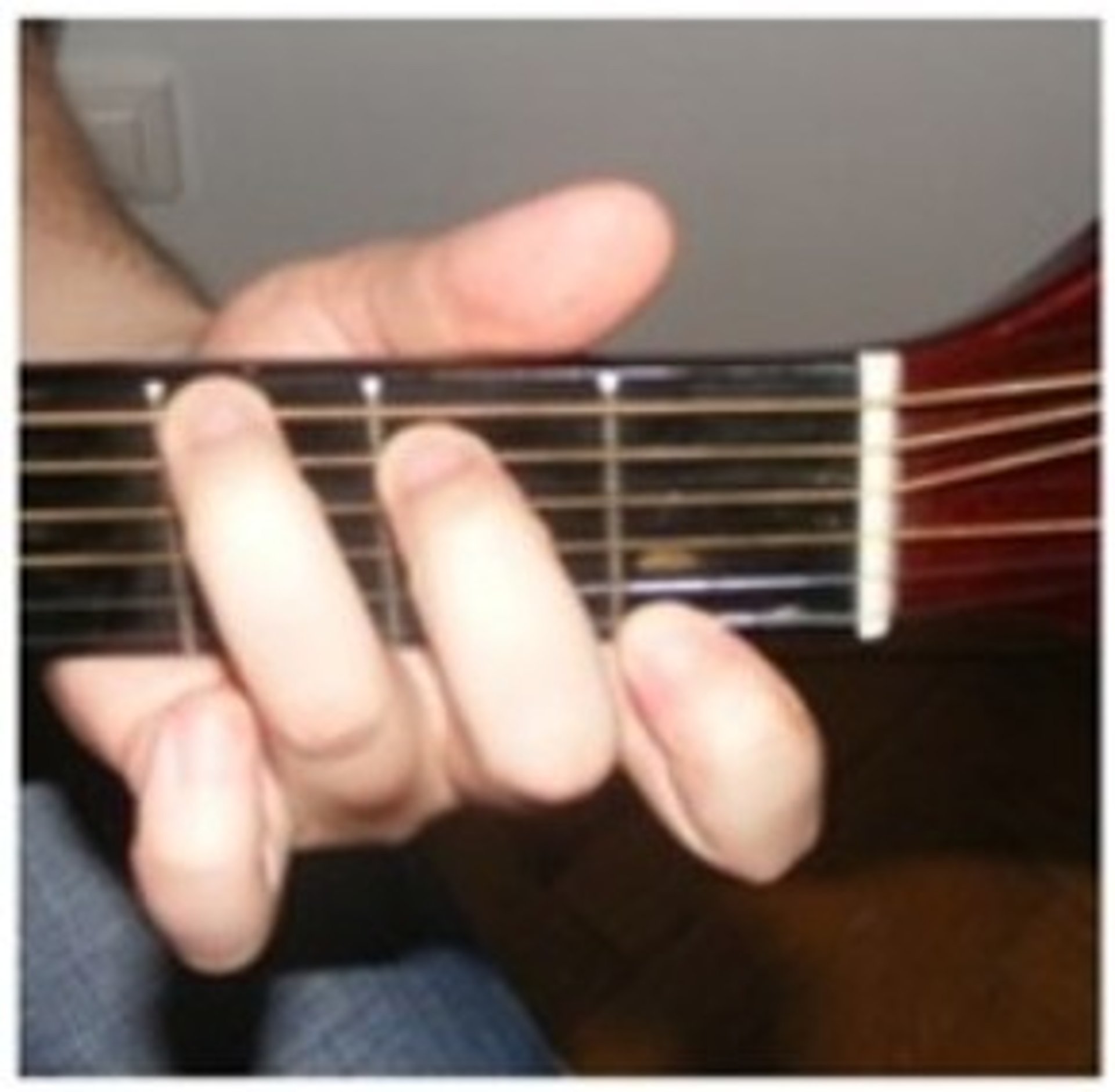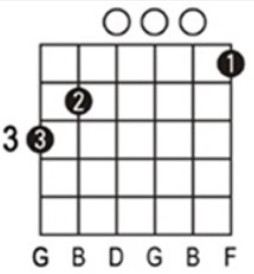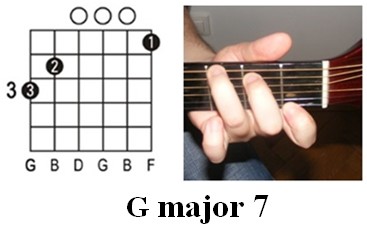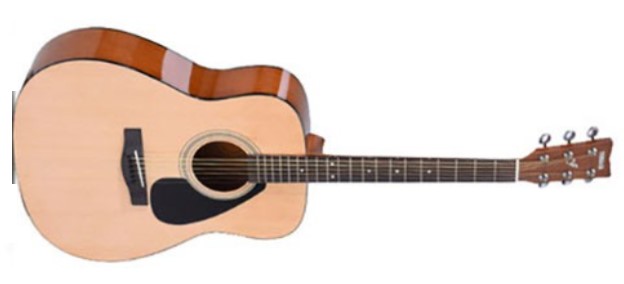
Beginners Guide to Mastering the G7 Chord Today
Master the G7 chord easily with this guide. Learn simple techniques, finger placement, and smooth transitions to enhance your guitar skills and sound instantly!
magicchords.com
10/19/2025


Learn to play the G7 chord with ease using this beginner’s guide. Master finger placement, sound clarity, and transitions to improve your overall guitar performance.
The G7 chord is one of the most important and versatile chords every guitarist should learn. It adds a distinctive bluesy and soulful flavor to your playing, often appearing in countless classic rock, blues, jazz, and pop songs. For beginners, mastering the G7 chord opens the door to understanding dominant seventh chords and how they create musical tension that resolves beautifully in progressions.
🎸 Master the G7 chord today - Content:
1. Introduction to the G7 Chord
2. Understanding the Importance of the G7 Chord in Music
3. Simple Finger Placement for the G7 Guitar Chord
4. Step-by-Step Guide to Playing the G7 Chord
5. Common G7 Chord Mistakes and How to Correct Them
6. The Benefits of Learning the G7 Guitar Chord for Beginners
7. Effective Tips for Mastering the G7 Chord Faster
8. Strumming the G7 Chord Smoothly and Confidently
9. How to Transition Effortlessly To and From the G7 Chord
When you first start practicing the G7 chord, focus on placing your fingers correctly on the fretboard. It’s similar to the regular G major chord but with a small, yet crucial difference — the addition of the flattened seventh note. This note gives the chord its signature warm and expressive tone. Beginners often find that this chord improves their dexterity and understanding of chord shapes across the neck.
The G7 chord also plays a vital role in many common progressions, such as C–G7 or G7–C, helping you train your ear to recognize harmonic relationships. Practicing it regularly will make transitions between chords smoother and improve your overall rhythm. Whether you’re strumming gently along to a ballad or playing upbeat blues riffs, the G7 chord brings richness and depth to your sound. With consistent practice, you’ll not only master its shape but also gain the confidence to incorporate it naturally into your favorite songs and improvisations.


Tips and advices for beginners 1: Learning to play songs you love can make guitar practice much more exciting and rewarding. Whether you’re a beginner or an intermediate player, focusing on rhythm, timing, and smooth transitions helps you progress faster. Exploring songs like Yellow by Coldplay gives you a perfect opportunity to practice fundamental chord shapes, especially when learning the Coldplay Yellow chords, which blend beautifully with emotional strumming. Regular practice builds confidence and helps you connect deeply with the music you play, enhancing your overall guitar journey.
Introduction to the G7 Chord
The G7 chord is one of the first dominant seventh chords that most guitar players encounter, and for good reason. It combines the brightness of a G major with a subtle tension that begs for resolution, creating a sound that’s both rich and expressive. In music theory, the “7” in G7 refers to the addition of a flattened seventh note, which gives the chord its soulful and slightly bluesy character. This makes it a staple in genres like blues, jazz, and rock ’n’ roll.


For beginners, learning the G7 chord is an excellent way to explore new tonal textures while improving finger coordination. The chord can be played in several positions on the fretboard, allowing for versatility and creativity. It’s particularly powerful when transitioning to the C major chord, forming one of the most common progressions in Western music. Understanding and mastering the G7 chord will deepen your musical intuition and broaden your guitar-playing possibilities.
Understanding the Importance of the G7 Chord in Music
The G7 chord holds a special place in music theory and guitar playing because of its unique ability to create tension and release. Known as a dominant seventh chord, it consists of the notes G, B, D, and F. This combination produces a sound that feels unresolved, naturally pulling the listener toward the next chord — most often C major. This quality makes the G7 chord essential in building emotional depth and musical storytelling.


Across genres like blues, jazz, rock, and pop, the G7 chord adds color and movement to chord progressions. In blues, it forms part of the classic 12-bar blues pattern, while in jazz, it introduces sophisticated harmonic layering. Even in simple pop songs, the G7 chord can transform a plain progression into something richer and more dynamic.
For guitarists, understanding the G7 chord goes beyond finger placement. It’s about recognizing its role in shaping musical direction and emotional tone. Practicing transitions between G7 and related chords, such as C or Am, helps players hear how the tension resolves beautifully. Once mastered, the G7 chord becomes an expressive tool that connects technical playing with musical storytelling. By grasping its theory and feel, guitarists can elevate even the simplest songs, adding warmth, depth, and a touch of soulful character to their playing.
Simple Finger Placement for the G7 Guitar Chord
Learning the G7 guitar chord is one of the most rewarding early steps for beginners because it introduces both musical color and finger coordination. Despite its rich sound, the G7 chord is surprisingly simple to play and doesn’t require stretching across too many frets. Understanding the correct finger placement from the start helps you achieve a clear tone and smooth transitions between chords.
To play the open G7 chord, begin by placing your first finger (index) on the first fret of the high E string (1st string). Next, place your second finger (middle) on the second fret of the A string (5th string). Finally, position your third finger (ring) on the third fret of the low E string (6th string). When strumming, aim to hit all six strings for a full, resonant sound. If any note buzzes or sounds muted, adjust your finger pressure or hand position slightly until the tone rings clear.


A helpful practice tip is to play each string individually to ensure that every note sounds crisp. Keep your thumb positioned behind the neck to maintain proper finger curvature. Over time, your fingers will develop the muscle memory to form the G7 chord instantly.
Once you’ve mastered this finger placement, experiment with transitioning from G7 to C major or D7, as these are common progressions in many songs. The G7 guitar chord not only strengthens your hand coordination but also opens the door to expressive rhythm playing and smoother musical flow.
Step-by-Step Guide to Playing the G7 Chord
Learning to play the G7 chord is an exciting step for any guitarist who wants to explore richer, more emotional sounds. The G7 chord, also known as the G dominant seventh, adds a beautiful tension and bluesy flavor to your playing, making it perfect for jazz, folk, country, and pop music. Mastering it will help you transition more smoothly between other chords and bring expressive depth to your rhythm or fingerstyle playing. To form the G7 chord, start by placing your ring finger on the third fret of the low E string (6th string). Next, position your middle finger on the second fret of the A string (5th string). Finally, place your index finger on the first fret of the high E string (1st string). Leave the D, G, and B strings open to let the full resonance of the chord shine through. When strumming, play all six strings and listen for a slightly gritty but harmonious tone.


If some notes sound muted, check that your fingers are pressing firmly enough and that your hand position allows each string to ring clearly. Keep your wrist relaxed and your thumb behind the neck for better reach and comfort. To get comfortable with the G7 chord, practice switching between it and C major, D7 chord, or E minor. These transitions will strengthen your coordination and train your ear to recognize how the G7 creates resolution in chord progressions. With regular practice, you’ll quickly master its smooth, soulful sound.
Common G7 Chord Mistakes and How to Correct Them
When learning the G7 chord, beginners often make a few common mistakes that can affect the sound and playability of the chord. One of the most frequent errors is not pressing down firmly enough on the strings, which causes buzzing or muted notes. To correct this, make sure your fingertips press the strings cleanly and close to the frets without flattening. This ensures a crisp, full sound when strumming.


Another common issue is poor hand positioning. Many players tend to curl their wrist inward or let their fingers touch adjacent strings, muting them unintentionally. To fix this, keep your wrist relaxed and your thumb behind the guitar neck for better control and finger placement. Your fingers should arch over the fretboard, allowing each string to ring clearly. Strumming all six strings too heavily can also make the G7 chord sound muddy. Try a lighter touch, focusing on even strumming and letting the open strings resonate naturally. Finally, beginners sometimes struggle with transitioning smoothly to or from the G7 chord. Slow, deliberate practice switching between G7 and chords like C major or A7 chord helps build muscle memory. With consistent effort and careful attention to these details, your G7 chord will soon sound clean, balanced, and confident.
The Benefits of Learning the G7 Guitar Chord for Beginners
Learning the G7 guitar chord offers several valuable benefits for beginners who want to build a strong musical foundation. This chord is one of the most versatile dominant seventh chords and appears in countless songs across blues, rock, jazz, and pop genres. Mastering the G7 chord helps new players understand how tension and resolution work in music, creating that distinctive “pull” that leads naturally back to the C major chord.


From a technical perspective, practicing the G7 improves finger dexterity, hand coordination, and muscle memory. It teaches players how to stretch and position their fingers efficiently, which makes learning other chords easier. Additionally, because the G7 combines open and fretted strings, it’s an excellent exercise in finger strength and control. For beginners, the G7 guitar chord is more than just a shape—it’s a gateway to smoother chord transitions, richer harmony, and a deeper appreciation of song structure.
Tips and advices for beginners 2: Developing control, coordination, and timing on the guitar requires consistent and mindful practice. One effective way to achieve this is by combining chord training with technique-focused routines. For example, practicing the G7 chord helps strengthen your fingers and improves your ability to switch between shapes smoothly. Alongside this, incorporating finger picking exercises enhances precision, tone clarity, and rhythmic accuracy. These two elements together create a balanced foundation, allowing you to express music more fluidly and play with both power and subtlety.
Effective Tips for Mastering the G7 Chord Faster
Mastering the G7 chord quickly requires a combination of proper technique, consistent practice, and focused exercises. One of the most effective strategies is to start slowly, ensuring that each note rings clearly. Beginners should focus on correct finger placement: the ring finger on the third fret of the low E string, the middle finger on the second fret of the A string, and the index finger on the first fret of the high E string. Proper curvature of the fingers and keeping the thumb behind the neck ensures that adjacent strings are not accidentally muted.


Practicing chord transitions is another key tip. Switching between G7 and common chords like C major or D7 helps develop fluidity and strengthens muscle memory. Start slowly, then gradually increase speed as you gain confidence. Strumming exercises also enhance mastery. Experiment with light, even strokes across all six strings, focusing on tone consistency. Recording yourself can help identify buzzing or muted notes that need adjustment. Incorporating short, frequent practice sessions into your daily routine is more effective than long, irregular sessions. Over time, these consistent efforts will make playing the G7 chord natural and effortless. With dedication, the chord becomes an essential tool for adding depth, emotion, and versatility to your guitar playing.
Strumming the G7 Chord on Guitar Smoothly and Confidently
Strumming the G7 chord smoothly and confidently is essential for creating a rich, expressive sound on the guitar. The G7 chord combines the brightness of G major with the added tension of the flattened seventh, producing a slightly bluesy, soulful tone. To strum it effectively, proper finger placement is crucial. Place your ring finger on the third fret of the low E string, middle finger on the second fret of the A string, and index finger on the first fret of the high E string. Keep your fingers arched and thumb positioned behind the neck to prevent muting adjacent strings.


When strumming, focus on even, relaxed motions. Start with slow downstrokes across all six strings to ensure each note rings clearly. Gradually incorporate upstrokes and rhythm variations to add dynamic expression. Avoid pressing too hard, as this can cause tension in the wrist and mute the strings. Practicing transitions between the G7 chord and chords like C major or D7 further enhances smoothness and confidence. Using a metronome can help maintain consistent timing and rhythm. With consistent practice, strumming the G7 chord will feel natural, allowing you to add depth, tension, and musicality to your playing. Smooth, confident strumming elevates even simple songs, making your guitar performance more expressive and enjoyable.
How to Transition Effortlessly To and From the G7 Chord
Transitioning to and from the G7 chord effortlessly is a crucial skill for any guitarist, especially beginners aiming for smooth and natural chord changes. The G7 chord, with its slightly bluesy and tense sound, often appears in common progressions such as G7 to C major or D7 to G7. Mastering these transitions allows your playing to sound fluid and professional. Start by ensuring your finger placement on the G7 chord is precise. Your ring finger should be on the third fret of the low E string, middle finger on the second fret of the A string, and index finger on the first fret of the high E string. Keep your fingers curved and your thumb positioned behind the neck to avoid muting any strings.


To practice transitions, focus on moving one finger at a time when switching to the next chord. For example, from G7 to C major, notice which fingers can stay close to their new positions and which need to move. Start slowly, maintaining clarity for each note, and gradually increase your speed as your muscle memory develops. Consistent daily practice, combined with strumming along to simple progressions, will make these transitions feel natural. Over time, switching in and out of the G7 chord will become second nature, enhancing the fluidity and expressiveness of your guitar playing.




